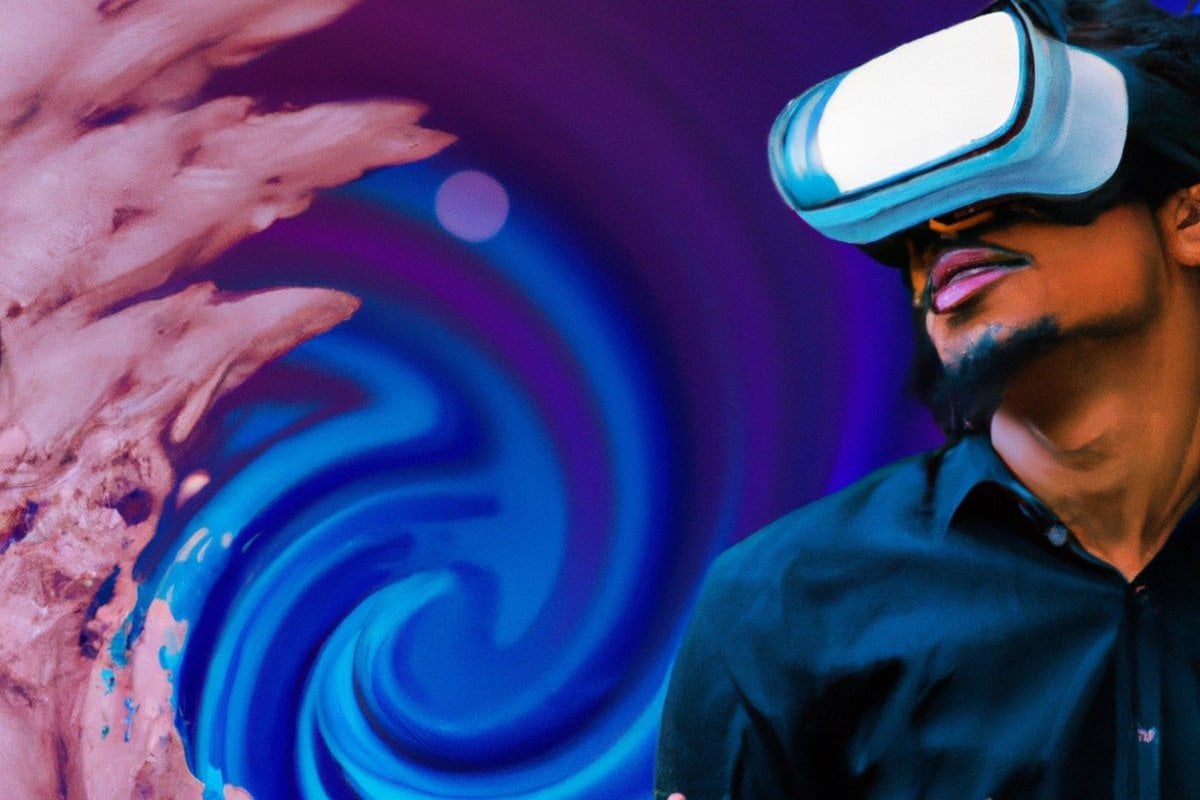Summary: The way our senses adjust while playing virtual reality (VR) games affects the severity of cybersickness experienced. Researchers measured how participants perceived the orientation of vertical lines before and after playing two VR games, one high-intensity, and one low-intensity.
They found that those who experienced less sickness were more likely to have the largest change in the subjective visual vertical following exposure to VR. The findings could be useful for VR designers and developers in creating more comfortable and enjoyable experiences.
Source: University of Waterloo
Key Facts:
- The subjective visual vertical (SVV) shifts considerably after playing high-intensity virtual reality (VR) games, and this adjustment affects the severity of cybersickness.
- Researchers collected data from 31 participants and found that those who experienced less sickness were more likely to have the largest change in the SVV following exposure to high-intensity VR.
- Understanding the relationship between sensory reweighting and cybersickness susceptibility can lead to the development of personalized cybersickness mitigation strategies and VR experiences.
The way our senses adjust while playing high-intensity virtual reality games plays a critical role in understanding why some people experience severe cybersickness and others don’t.
Cybersickness is a form of motion sickness that occurs from exposure to immersive VR and augmented reality applications.
A new study, led by researchers at the University of Waterloo, found that the subjective visual vertical – a measure of how individuals perceive the orientation of vertical lines – shifted considerably after participants played a high-intensity VR game.
“Our findings suggest that the severity of a person’s cybersickness is affected by how our senses adjust to the conflict between reality and virtual reality,” said Michael Barnett-Cowan, a professor in the Department of Kinesiology and Health Sciences.
“This knowledge could be invaluable for developers and designers of VR experiences, enabling them to create more comfortable and enjoyable environments for users.”
The researchers collected data from 31 participants. They assessed their perceptions of the vertical before and after playing two VR games, one high-intensity and one low-intensity.
Those who experienced less sickness were more likely to have the largest change in the subjective visual vertical following exposure to VR, particularly at a high intensity. Conversely, those who had the highest levels of cybersickness were less likely to have changed how they perceived vertical lines.

There were no significant differences between males and females, nor between participants with low and high gaming experience.
“While the subjective vertical visual task significantly predicted the severity of cybersickness symptoms, there is still much to be explained,” said co-author William Chung, a former Waterloo doctoral student who is now a postdoctoral fellow at the Toronto Rehabilitation Institute.
“By understanding the relationship between sensory reweighting and cybersickness susceptibility, we can potentially develop personalized cybersickness mitigation strategies and VR experiences that take into account individual differences in sensory processing and hopefully lower the occurrence of cybersickness.”
As VR continues to revolutionize gaming, education and social interaction, addressing the pervasive issue of cybersickness – marked by symptoms such as nausea, disorientation, eye strain and fatigue – is critical for ensuring a positive user experience.
About this visual neuroscience research news
Author: Ryon Jones
Source: University of Waterloo
Contact: Ryon Jones – University of Waterloo
Image: The image is credited to Neuroscience News
Original Research: Closed access.
“Sensory reweighting: a common mechanism for subjective visual vertical and cybersickness susceptibility” by Michael Barnett-Cowan et al. Virtual Reality
Abstract
Sensory reweighting: a common mechanism for subjective visual vertical and cybersickness susceptibility
The malaise symptoms of cybersickness are thought to be related to the sensory conflict present in the exposure to virtual reality (VR) content.
When there is a sensory mismatch in the process of sensory perception, the perceptual estimate has been shown to change based on a reweighting mechanism between the relative contributions of the individual sensory signals involved.
In this study, the reweighting of vestibular and body signals was assessed before and after exposure to different typical VR experiences and sickness severity was measured to investigate the relationship between susceptibility to cybersickness and sensory reweighting.
Participants reported whether a visually presented line was rotated clockwise or counterclockwise from vertical while laying on their side in a subjective visual vertical (SVV) task. Task performance was recorded prior to VR exposure and after a low- and high-intensity VR game.
The results show that the SVV was significantly shifted away from the body representation of upright and towards the vestibular signal after exposure to the high-intensity VR game.
Cybersickness measured using the fast motion sickness (FMS) scale found that sickness severity ratings were higher in the high intensity compared to the low-intensity experience.
The change in SVV from baseline after each VR exposure modelled using a simple 3-parameter Gaussian regression fit was found to explain 49.5% of the variance in the FMS ratings.
These results highlight the aftereffects of VR for sensory perception and suggest a potential relationship between the susceptibility to cybersickness and sensory reweighting.






